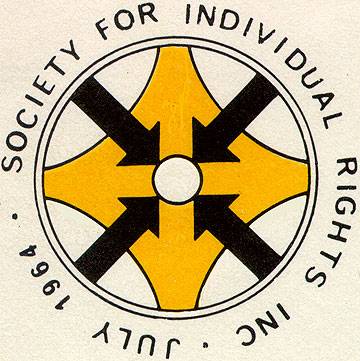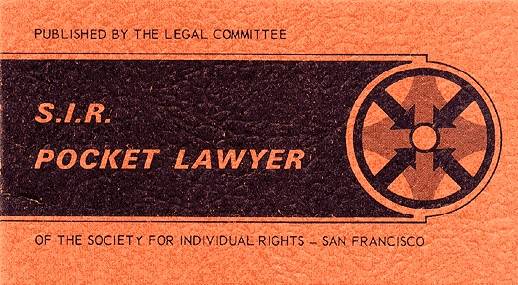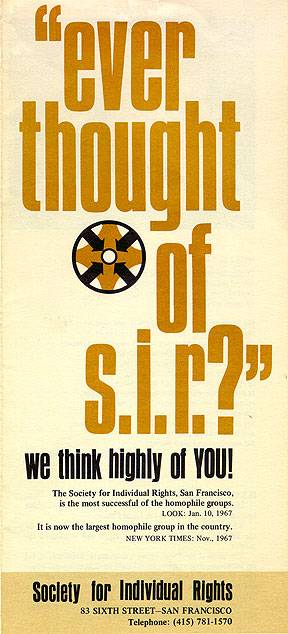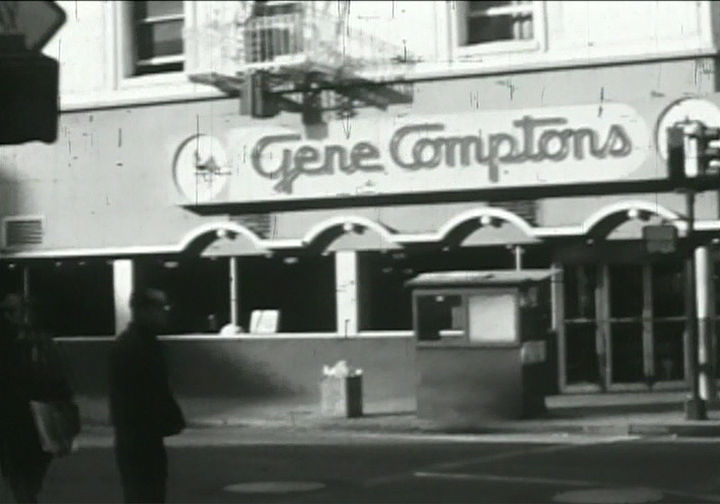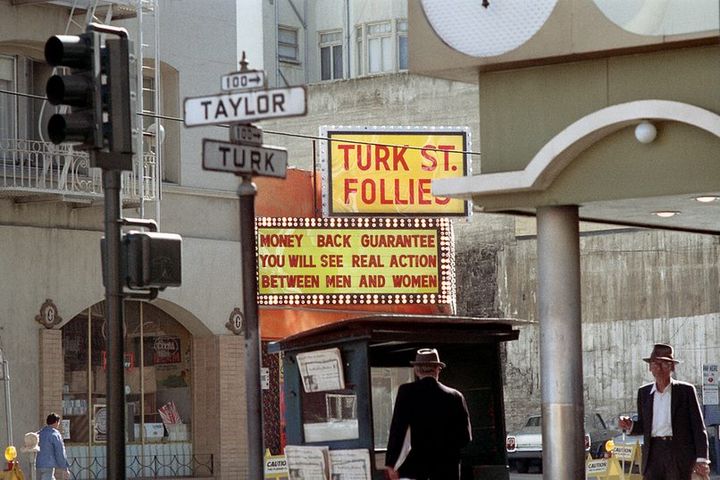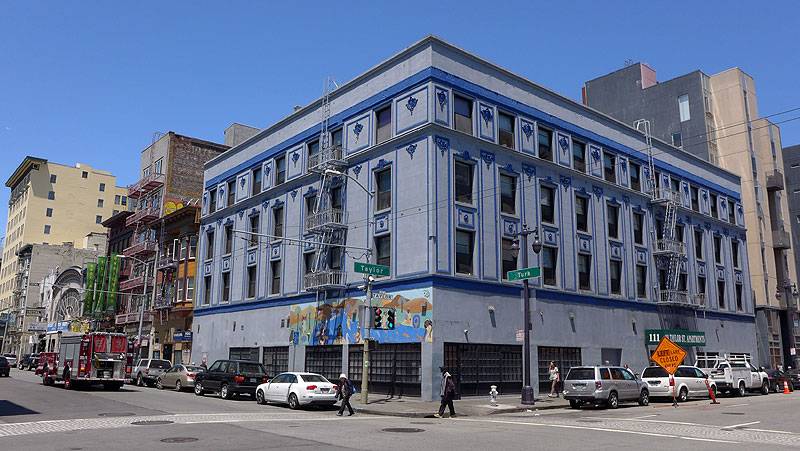Society for Individual Rights (SIR): Difference between revisions
(added photo) |
(embedded video) |
||
| Line 40: | Line 40: | ||
In August 1966, a Tenderloin cafeteria became the site of a showdown between gays and police. Compton's, at the corner of Turk and Taylor, was frequented by hustlers and queens, One night, a policeman grabbed at one of the queens, and rather than tolerating the harassment, she threw her coffee in his face. Fighting erupted as angry young gays broke out the windows, threw dishes and trays at the officers, and burned down a nearby newsstand. The next day, drag queens were barred from the cafeteria, and a picket line sprang up. That night, protesters smashed the premises' newly installed plate-glass windows. | In August 1966, a Tenderloin cafeteria became the site of a showdown between gays and police. Compton's, at the corner of Turk and Taylor, was frequented by hustlers and queens, One night, a policeman grabbed at one of the queens, and rather than tolerating the harassment, she threw her coffee in his face. Fighting erupted as angry young gays broke out the windows, threw dishes and trays at the officers, and burned down a nearby newsstand. The next day, drag queens were barred from the cafeteria, and a picket line sprang up. That night, protesters smashed the premises' newly installed plate-glass windows. | ||
[http://vimeo.com/1667849 Screaming Queens: The Riot at Compton's Cafeteria clip] from [http://vimeo.com/frameline Frameline] | <iframe src="https://player.vimeo.com/video/1667849" width="640" height="480" frameborder="0" allow="autoplay; fullscreen" allowfullscreen></iframe> | ||
<p><a href="https://vimeo.com/1667849">Screaming Queens: The Riot at Compton's Cafeteria clip</a> from <a href="https://vimeo.com/frameline">Frameline</a> on <a href="https://vimeo.com">Vimeo</a>.</p> | |||
[http://vimeo.com/1667849 Screaming Queens: The Riot at Compton's Cafeteria clip] from [http://vimeo.com/frameline Frameline] | |||
Thus, almost three years before Stonewall, San Francisco's gay militancy was born.<br><br> | Thus, almost three years before Stonewall, San Francisco's gay militancy was born.<br><br> | ||
Revision as of 21:21, 23 April 2020
Historical Essay
by Bill Brent, Black Sheets magazine, 1998
Society for Individual Rights Pocket Lawyer
As queer San Franciscans began to reap the hard-earned benefits of past two decades of organizing, the United States began to experience a profound social upheaval. The Society for Individual Rights (with the delightfully dominant acronym of "SIR") was formed in September 1964.
SIR represented a new breed of homophile organization, one which was assertive and self-confident. Where earlier political bodies such as the Mattachine Society and Daughters of Bilitis had been assimilationist out of necessity, SIR was liberationist out of righteousness. It was also more democratic and inclusive, and this new style would become a model for gay political organizations to follow.
One remarkable aspect of SIR, which seems obvious only in retrospect, was that it recognized the need to create a "community feeling." This was the first time that large numbers of gay men and women participated openly and freely in a gay political entity. SIR welcomed any activity that its members had the initiative to organize. Parties, dances, and entertainment of all kinds packed its calendars, along with bowling leagues, bridge clubs, meditation groups, art classes, and more. It operated a thrift shop stocked with goods donated by the gay male community and staffed by volunteers. In cooperation with the Public Health Department, it educated the gay male population about venereal disease. And in April 1966, SIR opened the first gay community center in the nation.
SIR's glossy monthly magazine, Vector, was widely available on newsstands throughout the City. It provided a forum for discussions and news on gay political progress. Local trends were highlighted; in 1968, Vector even published a thoughtful issue devoted to leather!
Within two years, SIR was the largest homophile organization in the country. SIR and the Tavern Guild enjoyed a mutually beneficial relationship. SIR held fundraising auctions in the bars, which attracted patrons, and bars donated food and drink for SIR's parties. SIR's effective campaign against VD was due in part to the bars' willingness to display educational brochures and posters.
The homophile movement also found allies in the socially concerned Protestant clergy, such as the Reverend A. Cecil Williams and Ted McIlvenna, a young minister who later became instrumental in San Francisco's Institute for the Advanced Study of Human Sexuality. The alliance eventually led to the formation in December 1964 of the Council on Religion and the Homosexual.
To raise funds for the fledgling organization, the ministers planned a New Year's Eve party for the gay community. In an era when the police arrested citizens and revoked liquor licenses for same-sex touching of the most innocent sort, holding a public gay dance was tantamount to a confrontation.
On the night of the dance, dozens of uniformed officers stalked California Hall, with police cars and paddy wagons parked in front. Police photographers took pictures of each of the 600 guests in a blatant attempt at harassment. Two days later, the ministers held a press conference condemning the police. They accused the police of "deliberate harassment and bad faith" and charged officers with "intimidation, broken promises, and obvious hostility." The police had overplayed their hand. ACLU lawyers, angered by the incident, took the case to trial. According to the Chronicle, "complaining officers sat with mouths agape" as the judge ordered the jury to return a verdict in favor of the gays. The ministers validated the charges of police harassment in a way that the words of a homosexual individual did not.
Compton's Cafeteria at Turk and Taylor, c. 1960s.
Photo: Shaping San Francisco
Corner of Turk and Taylor, 1971, with Compton's Cafeteria decor visible foreground right.
Photo: courtesy Phil Davies, via Facebook
In August 1966, a Tenderloin cafeteria became the site of a showdown between gays and police. Compton's, at the corner of Turk and Taylor, was frequented by hustlers and queens, One night, a policeman grabbed at one of the queens, and rather than tolerating the harassment, she threw her coffee in his face. Fighting erupted as angry young gays broke out the windows, threw dishes and trays at the officers, and burned down a nearby newsstand. The next day, drag queens were barred from the cafeteria, and a picket line sprang up. That night, protesters smashed the premises' newly installed plate-glass windows.
<iframe src="https://player.vimeo.com/video/1667849" width="640" height="480" frameborder="0" allow="autoplay; fullscreen" allowfullscreen></iframe>
<a href="https://vimeo.com/1667849">Screaming Queens: The Riot at Compton's Cafeteria clip</a> from <a href="https://vimeo.com/frameline">Frameline</a> on <a href="https://vimeo.com">Vimeo</a>.
Screaming Queens: The Riot at Compton's Cafeteria clip from Frameline
Thus, almost three years before Stonewall, San Francisco's gay militancy was born.
Corner of Turk and Taylor, old Compton's Cafeteria site, seen here in 2015.
Photo: Chris Carlsson

